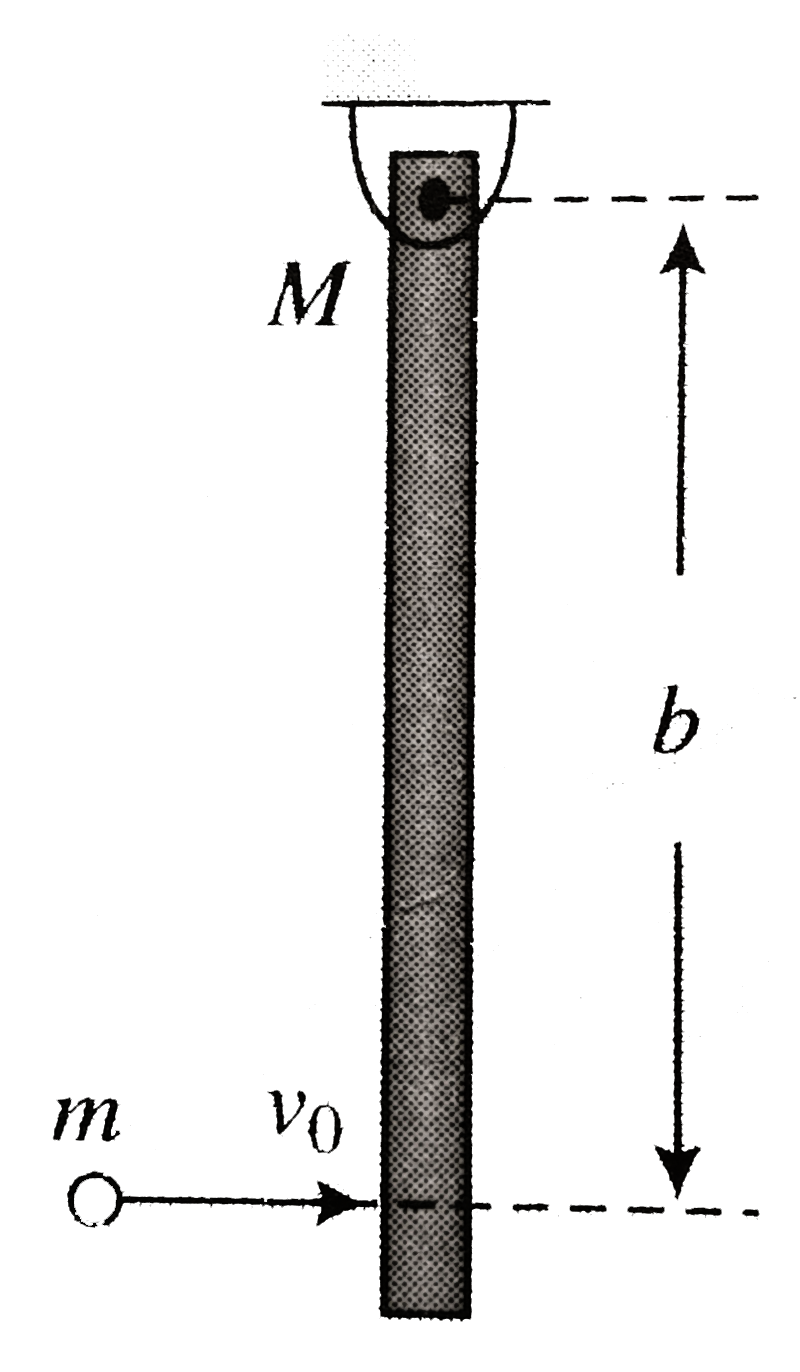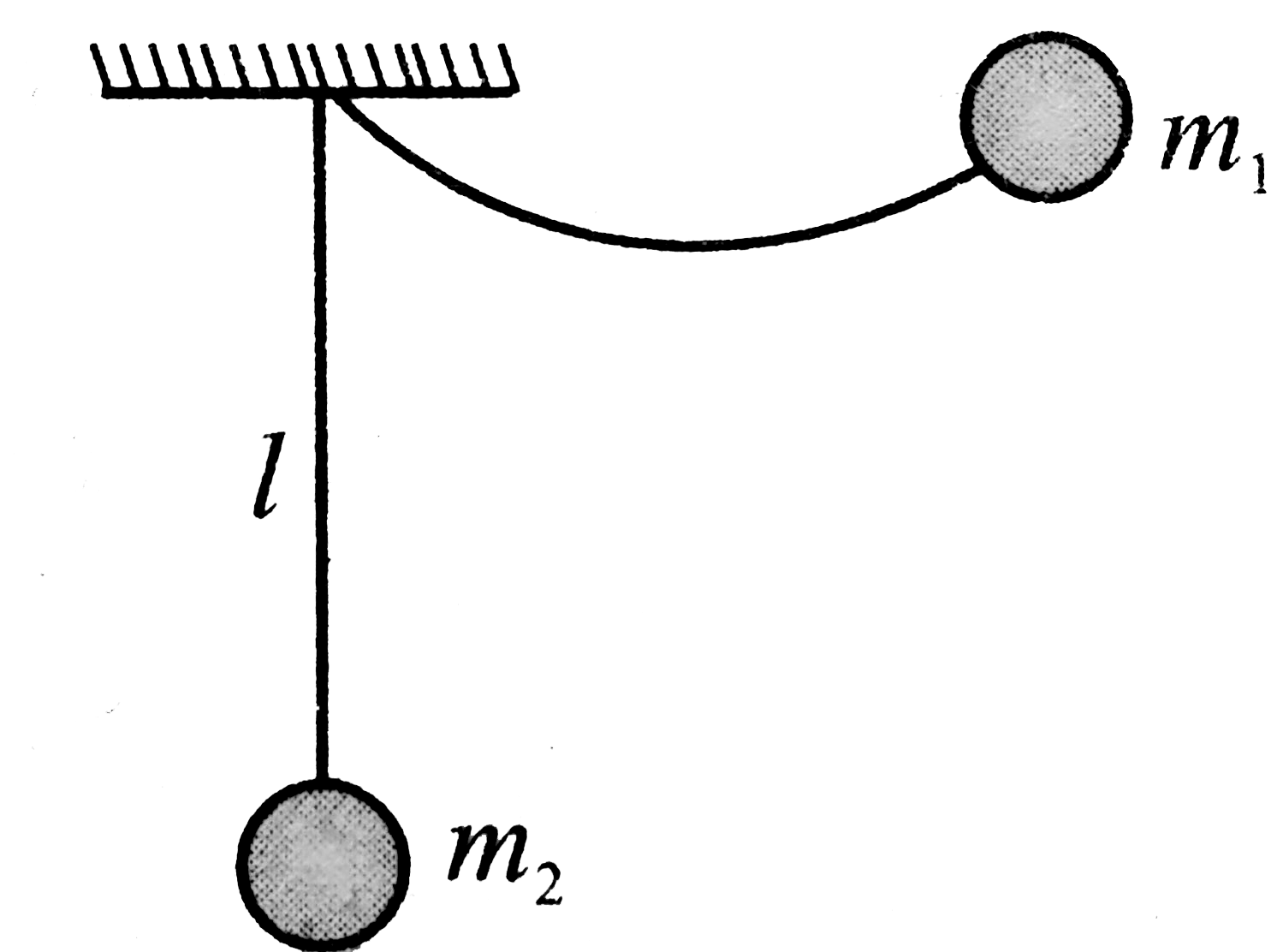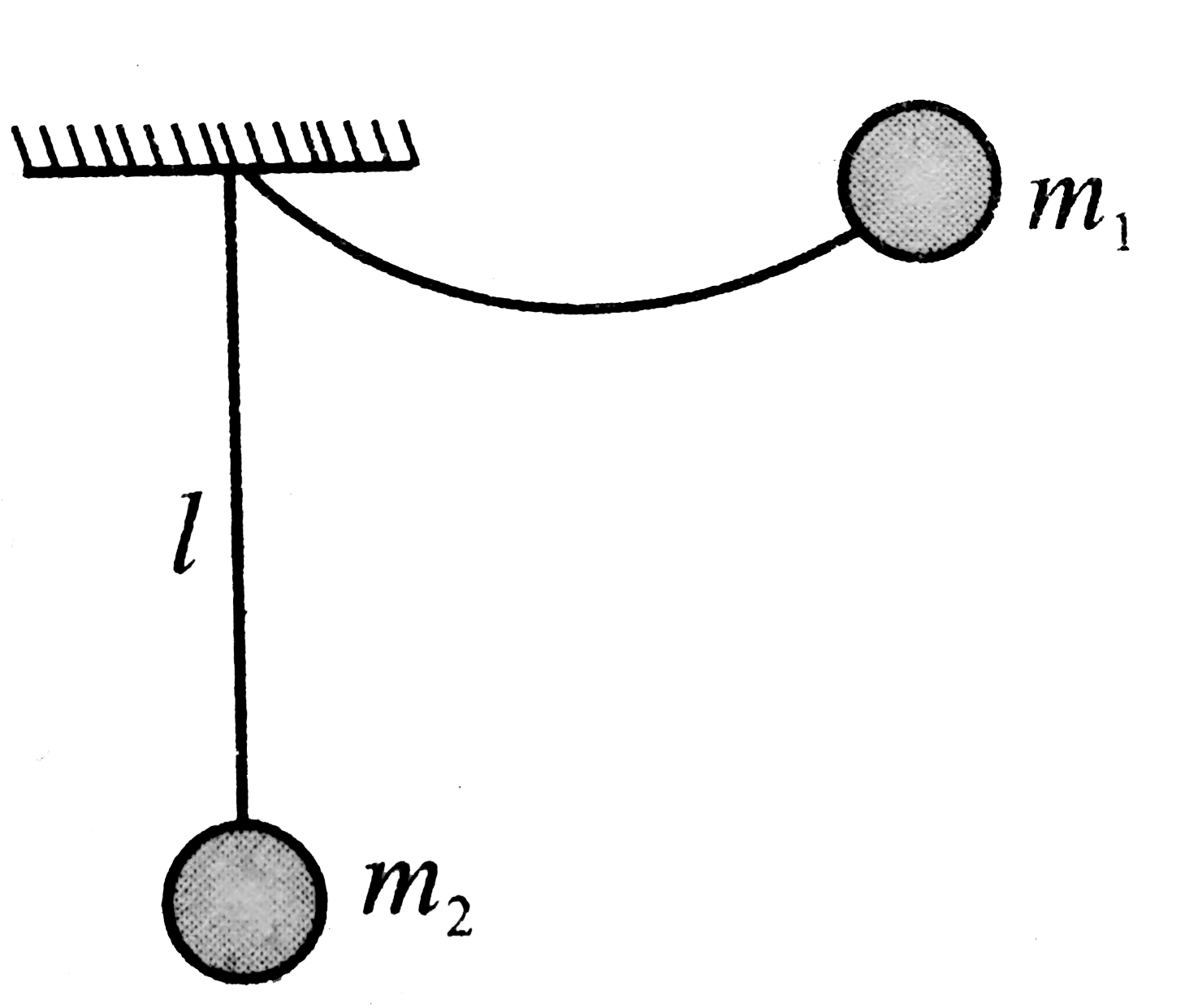A ball of mass M collides elastically with another stationary ball of mass m. If M>m, find the maximum angle of deflection of M.
The correct Answer is:sin−1(m/M)
Step by step video, text & image solution for A ball of mass M collides elastically with another stationary ball of mass m. If M gt m, find the maximum angle of deflection of M. by Physics experts to help you in doubts & scoring excellent marks in Class 11 exams.
Topper's Solved these Questions
Similar Questions
A particle of mass m1 collides elastically with a stationary particle of mass m2(m1>m2). Find the maximum angle through which the striking particle may deviate as a result of the collision.
View SolutionA ball of mass m collides elastically with a smooth hanging rod of mass M and length l.
a. If M=3m find the value of b for which no horizontal reaction occurs at the pivot.
b. For what value of m/M the ball falls dead just after the collision assuming e=(12)?
 View Solution
View Solution
Knowledge Check
- Question 1 - Select One or More
A ball of mass m1, collides elastically and head on with ball of mass m2 at rest. Then
AThe transfer of kinetic energy to the second ball is maximum when m1=m2BThe change of momentum of first ball is maximum, when m1<<m2.CThe velocity of the second ball is maximum, when m1>>m2.DNone of these - Question 2 - Select One
Two balls of masses m1=100g and m2=300g are suspended from point A by two equal inextensible threads, each of length l=3235m. Ball of mass m1 is drawn aside and held at the same level as A but at a distance (√32)l from A, as shown in Fig. When ball m1 is released, it collides elastically with the stationary ball of mass m2.
 The maximum rise of centre of mass of the ball of massm2 isA0.20mB0.50mC0.75mD1m
The maximum rise of centre of mass of the ball of massm2 isA0.20mB0.50mC0.75mD1m - Question 3 - Select One
A partical of mass m moving with velocity 1m/s collides perfectly elastically with another particle of mass 2m. If the incident particle is deflected by 90∘. The heavy mass will make and angle θ with the initial direction of m equal to:
A60∘B45∘C15∘D30∘
A body of mass m collides elastically with a stationary body of mass M. After collision, m has a speed equal to one-third of its initial speed. Calculate the ratio (m/M).
View SolutionA ball of mass 2 kg moving with 4 m/s collides elastically with a stationary ball. If it continues to move in original direction with 1/4th of its original velocity. Find velocity of centre of mass of system
View SolutionA body of mass M1 collides elastically with another mass M2 at rest. There is maximum transfer of energy when :
View SolutionA body of mass m1 collides elastically with a stationary body of mass m2 and returns along the same line with one fourth of its initial speed, then m1/m2=
View SolutionTwo balls of masses m1=100g and m2=300g are suspended from point A by two equal inextensible threads, each of length l=3235m. Ball of mass m1 is drawn aside and held at the same level as A but at a distance (√32)l from A, as shown in Fig. When ball m1 is released, it collides elastically with the stationary ball of mass m2.

Velocity u1 with which the hall of mass m1 collides with the other ball isView Solution

